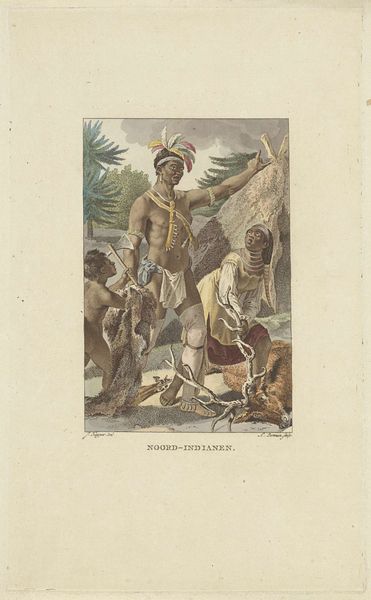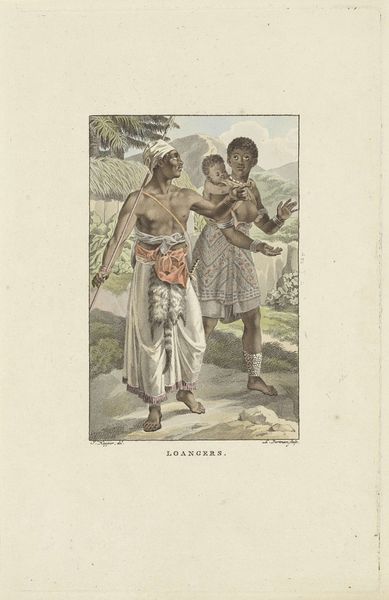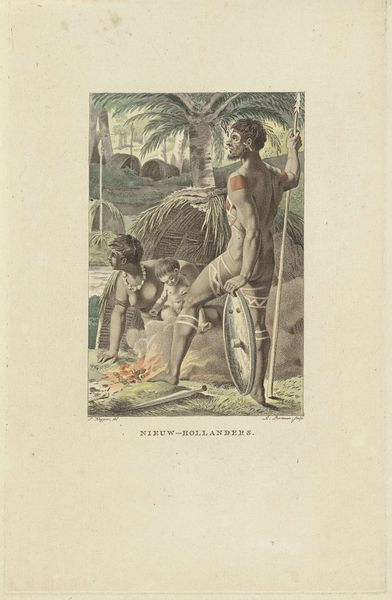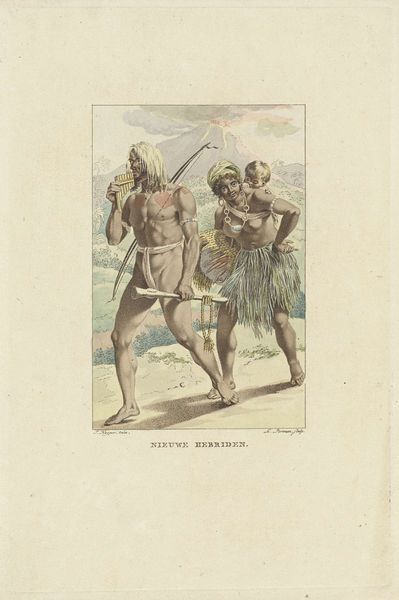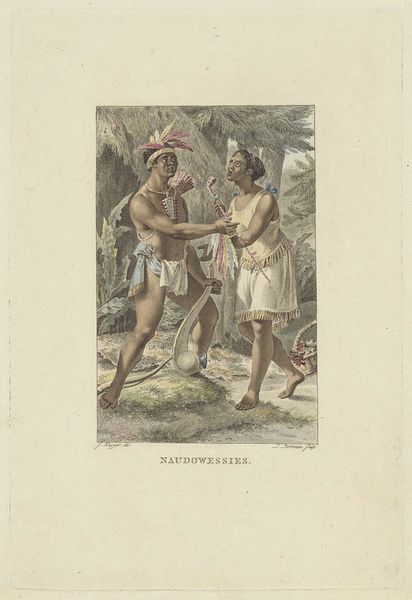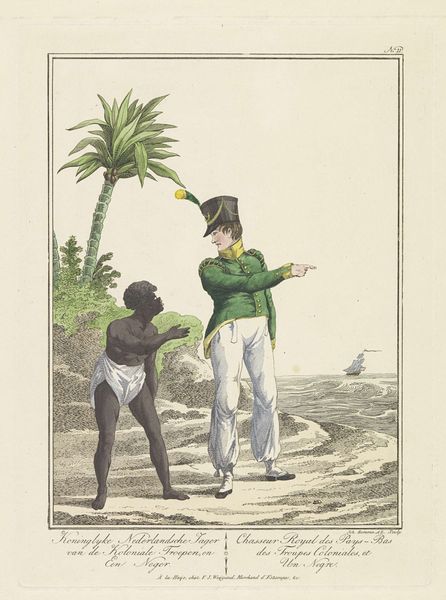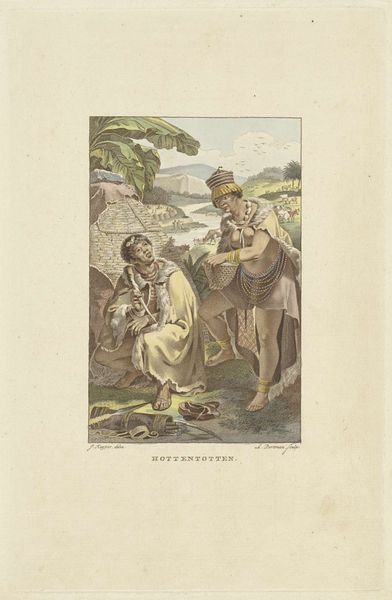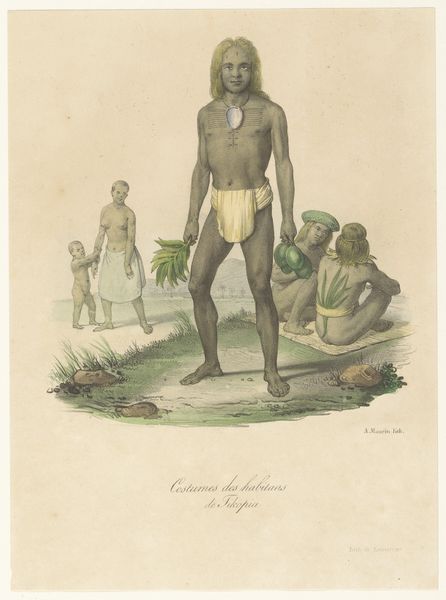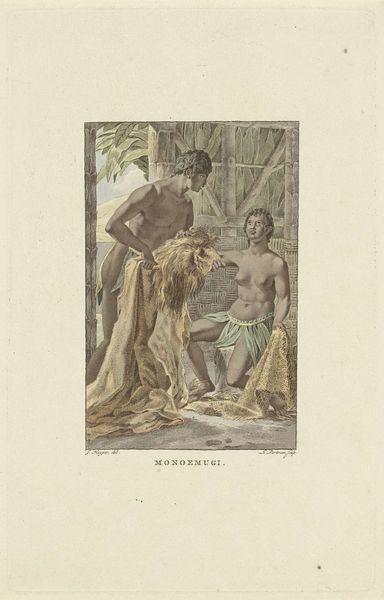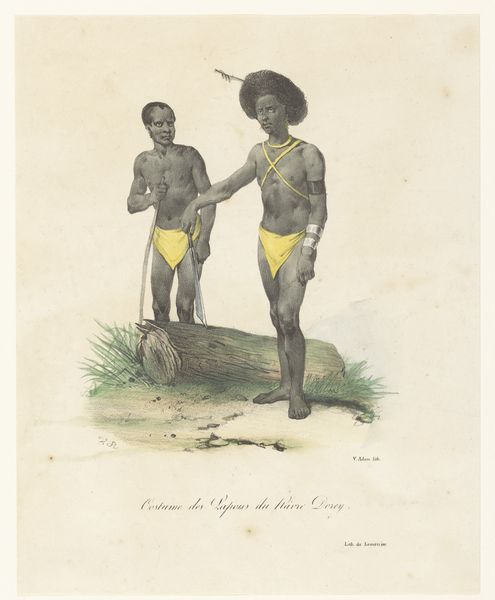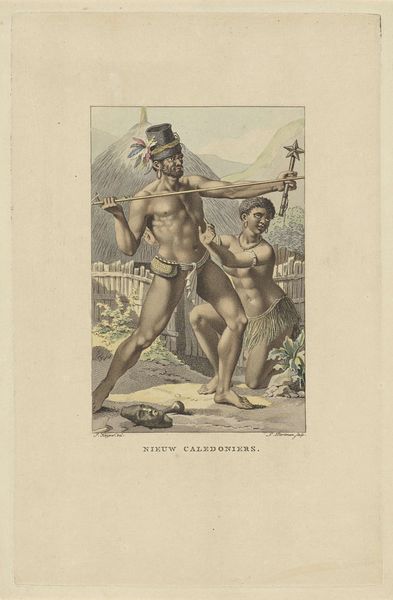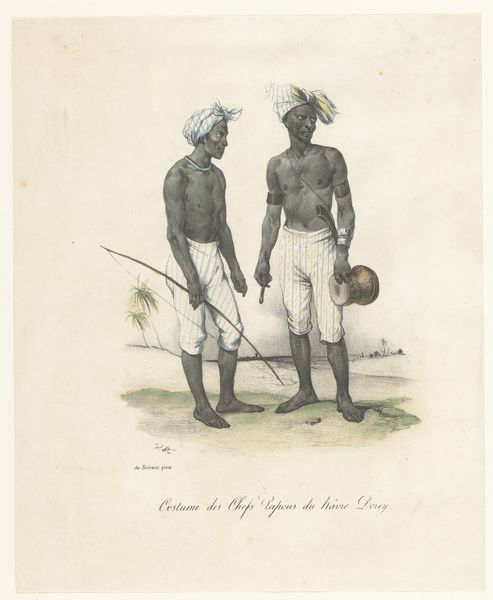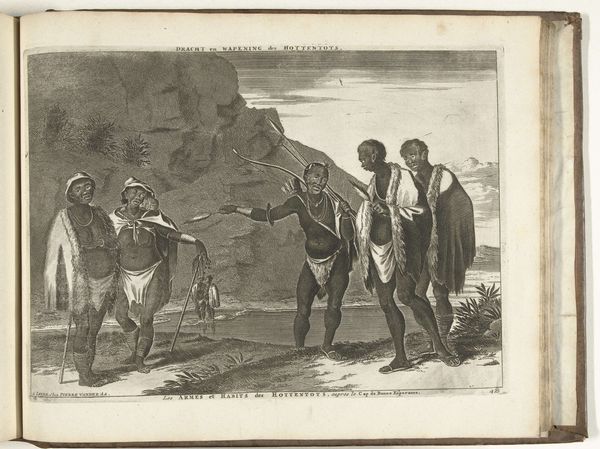
print, engraving
# print
#
engraving
Dimensions: height 247 mm, width 162 mm
Copyright: Rijks Museum: Open Domain
Ludwig Gottlieb Portman made this print, Bewoners van Tasmanië, using etching and engraving. These are both intaglio printmaking techniques, where the image is incised into a metal plate. The process starts with coating a metal plate with a waxy, acid-resistant substance called a ground. The artist then draws an image on the ground, exposing the metal. In etching, acid is used to bite into the exposed lines, creating grooves. Engraving, on the other hand, involves using a tool called a burin to directly cut lines into the metal. Both create a design of recessed lines that hold ink. The plate is inked, the surface wiped clean, and then pressed onto paper, transferring the ink from the grooves to create the print. Notice the linear quality in this print; this comes from the way the image was manually cut into the metal. This is an early example of ethnographic representation, but the mediation of industrial printmaking is crucial to understanding its social context. The labor of the engraver transforms the image, placing it in a much wider circuit of communication and control.
Comments
No comments
Be the first to comment and join the conversation on the ultimate creative platform.
